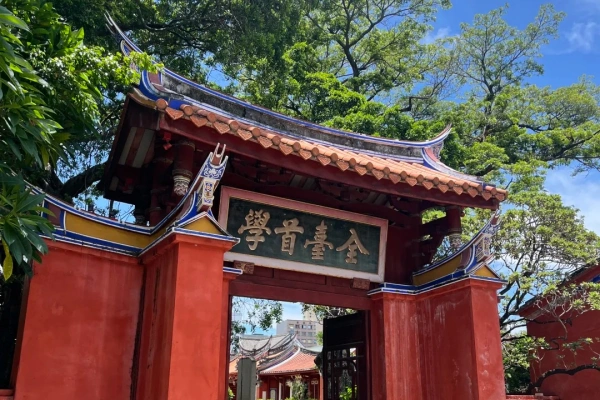Temple of Confucius
Historical Overview
The Temple of Confucius has a storied history that reflects the enduring influence of Confucianism in China.
478 BC: The temple was first established by Duke Ai of the State of Lu, Confucius's native land, to commemorate the philosopher's life and teachings.
Song Dynasty (960-1279): The temple underwent significant expansions, becoming a grand complex with multiple halls and courtyards.
Ming and Qing dynasties (1368-1912): Further renovations and additions were made, solidifying its status as the preeminent Confucian temple in China.
20th Century: Despite periods of neglect during political upheavals, the temple was restored and preserved as a national cultural treasure.
Structural Layout
The Temple of Confucius covers an area of 16 hectares and features a symmetrical layout with nine courtyards arranged along a central axis.
Main Entrance: The "Wumen" or Martial Gate serves as the grand entrance, leading to the first courtyard.
Dacheng Hall: The largest and most important hall, dedicated to Confucius himself, houses a statue of the sage and is surrounded by smaller halls dedicated to his disciples.
Other Halls: The temple complex includes halls dedicated to Confucian scholars, ancestral worship, and the display of historical artifacts and inscriptions.
Gardens and Ponds: The temple grounds are adorned with beautiful gardens, ponds, and ancient trees, creating a serene and contemplative atmosphere.

Major Attractions
Dacheng Hall: The focal point of the temple, this grand hall features intricate wood carvings, colorful paintings, and a statue of Confucius seated on a throne.
Apricot Platform: A raised platform where Confucius is said to have delivered lectures to his disciples, surrounded by ancient apricot trees.
Stele Forest: A collection of over 1,000 stone steles inscribed with Confucian classics, historical records, and calligraphy by famous scholars.
Kuiwen Pavilion: A library tower that houses rare books and manuscripts related to Confucianism and Chinese history.
Suggested Itineraries
Classic Route (1-2 Hours)
Start at the Martial Gate and stroll through the first few courtyards.
Visit Dacheng Hall to pay respects to Confucius and admire its architectural grandeur.
Explore the Apricot Platform and Stele Forest to gain insights into Confucian teachings and history.
Cultural Depth Route (3-4 Hours)
Follow the classic route and then delve deeper into the temple complex.
Visit Kuiwen Pavilion to view rare books and manuscripts.
Explore the smaller halls dedicated to Confucian scholars and ancestral worship.
Attend a traditional Confucian ceremony or lecture if available.
All-Day Exploration (Full Day)
Begin with the classic route and cultural depth route.
Take a leisurely walk through the temple gardens, enjoying the tranquil scenery.
Participate in interactive activities such as calligraphy workshops or traditional music performances.
Visit nearby attractions such as the Cemetery of Confucius and the Kong Family Mansion for a comprehensive understanding of Confucian culture.
Ticket Purchase
Online: Tickets can be purchased through the official website or authorized travel platforms in advance.
On-Site: Tickets are also available at the temple entrance, but queues may be long during peak hours.
Prices: Standard entry tickets are reasonably priced, with discounts available for students, seniors, and groups.
Special Exhibitions: Additional fees may apply for special exhibitions or events held within the temple complex.
Guided Tours: Guided tours are available in multiple languages and can be booked in advance or on-site.

Transportation
By Subway: While there is no direct subway access to the Temple of Confucius, visitors can take a subway to the nearest station and then transfer to a bus or taxi.
By Bus: Several bus routes connect Qufu city center with the temple complex, making it easily accessible by Public Transportation.
By Taxi: Taxis are readily available in Qufu and can take visitors directly to the temple entrance.
By Car: Visitors driving to the temple can park in designated parking areas near the entrance.
Best Time & Tips
Avoid Crowds: The temple is busiest during weekends, holidays, and special events. Visiting on weekdays or early in the morning can help avoid crowds.
Weather: The temple can be visited year-round, but spring and autumn offer the most pleasant weather for outdoor exploration.
Essentials: Wear comfortable shoes as the temple complex is large and requires a lot of walking. Bring a hat and sunscreen during sunny days and an umbrella or raincoat during rainy seasons.
Photography: Photography is allowed in most areas of the temple, but flash photography and tripods may be prohibited in certain halls or during special events.
Respect: As a place of worship and cultural significance, visitors should dress modestly and behave respectfully while inside the temple complex.
Contact Us
What Our Clients Say?
Based on 10,000+ traveler reviews














